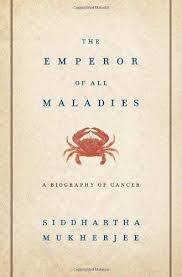I’ve taken advantage of the quarantine to finally finish The Emperor of All Maladies. I was particularly struck by one of the book’s heroes, Sidney Farber, who developed the first drug to treat cancer. Through a combination of determination and serendipity, he discovered that folate blockers could cure childhood leukemia, at least temporarily.
Today, further advances in therapy have brought once-unthinkable cures to leukemia and other cancers. Of course, the side-effects of these therapies also mean that supportive care has needed to evolve alongside it. The sequencing of the human genome, completed in 2003, brought hope that such toxicities could be avoided by “precision medicine” directed at the specific features that differentiate cancer cells from the rest of the body. But precision is not a new goal; in fact, Sidney Farber knew the exact mechanism of action for the folate inhibitors when he first published them.
And despite the promise of “precision medicine”, our methods remain rather blunt. Nearly all childhood cancers continue to be treated with conventional chemotherapy, radiation, and surgery. The hottest developments in adult cancer are immune activators – hardly a “precise” anticancer therapy.
Months into the current pandemic, we can see that the limits of precision medicine stretch beyond cancer. With the sequencing of thousands of viral samples, we’re able to track its evolution and global spread. Yet to address it, our best strategy is a lesson from a century ago: “social distancing”, perhaps the least precise intervention possible.
So we wait. Every generation fights disease with the most precise tools at its disposal, and we all anxiously await a more precise intervention to treat or prevent COVID-19. Until then, may we continue to cooperate to minimize the cost of this pandemic.
